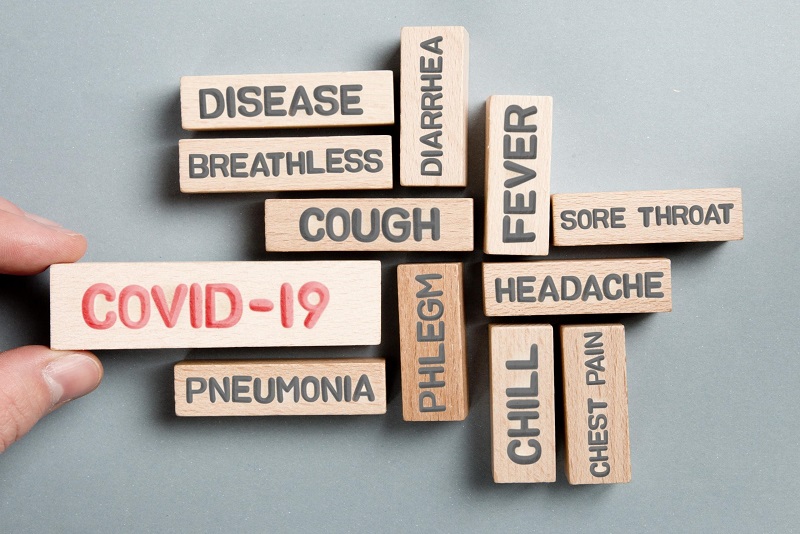How do you know if you’re suffering from a cold, flu, or COVID-19? Do you have a cough, muscle aches, or a sore throat?
While all three respiratory illnesses share a few common symptoms and methods of treatment, they’re distinct in many ways – one of the most common is the severity of the illness.
Read on to find out the important differences between them, common symptoms, and how you can protect yourself and others from a severe illness.
Symptoms to look out for
All three illnesses are spread from person to person through droplets from the nose and mouth from an infected individual.
As Dr. Laraine Washer, medical director of infection prevention and epidemiology at Michigan Medicine said: “There is a significant overlap between symptoms of influenza and COVID-19. Both can present with fever, chills, cough, a runny/stuffy nose, muscle/body aches, fatigue, and headache.”
Now that we understand a little bit more about their similarities, it’s time to assess how these three illnesses differ. Let’s first compare the differences between the flu & COVID-19:
Flu:
Cause of illness: from influenza virus
Incubation period: 1 to 4 days
How long does it take for symptoms to subside? 3 to 7 days
Common symptoms: fever; muscle aches; chills; fatigue; cough; sore throat; headaches; shortness of breath; vomiting & diarrhea (usually common in children rather than adults)
COVID-19:
Cause of illness: from SARS-COV-2 virus
Incubation period: 2 to 14 days
How long does it take for symptoms to subside? 2 to 6 weeks
Some of the common symptoms experienced when having the flu can also be experienced when you have COVID-19.
The difference in symptoms that gives a strong indicator of having COVID-19 is when you start to lose your sense of taste and smell.
But, with the emergence of another variant, this symptom has become less common, making getting tested for COVID-19 the only way to guarantee your diagnosis.
To know more about their similarities and differences, here’s an insightful article from the CDC.
Next, let’s compare the common cold & COVID-19:
Colds:
Cause of illness: from rhinoviruses
Incubation period: 1 to 3 days
How long does it take for symptoms to subside? 3 to 10 days
Common symptoms: cough; fatigue; sore throat; watery eyes; loss of taste or smell (especially with a stuffy nose)
COVID-19:
Cause of illness: from SARS-COV-2 virus
Incubation period: 2 to 14 days
How long does it take for symptoms to subside? 2 to 6 weeks
Most of the symptoms associated with a cold usually develop if you’re suffering from COVID-19 as well (except for a runny or stuffy nose, which is uncommon with COVID-19.). However, if you’re also experiencing the following, this could be a strong indicator of having COVID-19 rather than a cold:
- Fever
- Shortness of breath
- Nausea or vomiting
- Diarrhea
- Chills
- Skin rashes
- Conjunctivitis
Now, let’s compare the common cold & the flu:
Colds:
Cause of illness: from rhinoviruses
Incubation period: 1 to 3 days
How long does it take for symptoms to subside? 3 to 10 days
Common symptoms: cough; fatigue; sore throat; watery eyes; loss of taste or smell (especially with a stuffy nose)
Flu:
Cause of illness: from influenza virus
Incubation period: 1 to 4 days
How long does it take for symptoms to subside? 3 to 7 days
Common symptoms: fever; muscle aches; chills; fatigue; cough; sore throat; headaches; shortness of breath; vomiting & diarrhea (usually common in children rather than adults)
Another compelling difference between a common cold and the flu is the onset and severity of the symptoms. Flu-like symptoms usually happen suddenly while symptoms for a cold happen gradually and do not result in any serious future health problems.
* If you’re interested in reading further about the similarities and differences between the flu and the common cold, here’s an article from the CDC.
Note: Comparing all three illnesses side-by-side, COVID-19 is considered the most feared as it can cause a higher risk for complications and fatality.
COVID-19 is also considered the more contagious among the three as individuals can spread it easily to others without showing any sort of symptoms.
It is also worth noting that, the severity of symptoms experienced in those who are vaccinated and unvaccinated will also differ, with the unvaccinated having a higher probability of hospitalization or a severe infection.
And in the US alone, only 62.6% of the total US population have been fully vaccinated as of this writing, further stressing the importance of following health and safety protocols to prevent the rise of severe infections and the emergence of new variants.
Possible Complications
Colds:
Of the three, a case of a common cold would be the best-case scenario, as this respiratory illness isn’t that serious. Recovery from a cold is projected in 3 to 10 days, depending on your immune system. Some can even have colds for as long as two weeks.
Flu:
Most people who suffer from the flu can recover in a week or two. However, there have also been flu cases that develop into something more. Here are some of the complications that can happen when you have the flu:
- Sinus and ear infections
- Pneumonia
- Myocarditis (inflammation of the heart)
- Encephalitis (inflammation of the brain)
- Myositis (inflammation of the muscles)
- Kidney failure
COVID-19:

When you’re infected with a less to mild COVID-19 infection, symptoms usually subside after 2 weeks or less. However, this doesn’t mean that the battle is over. More than 80% of COVID-19 survivors experience recurring symptoms in the following weeks or even months after their initial infection.
More commonly known as long-COVID, common signs and symptoms that recur include:
- Fatigue
- Trouble concentrating or ‘brain fog’
- Dry cough
- Shortness of breath
- Sore throat
- Depression
- Anxiety
- Difficulty sleeping
- Chest pain
- Palpitations
- Heart inflammation
Final thoughts
As we continue to learn more about the COVID-19 virus and what causes it, there are still aspects left unknown, such as the severity of different variants, range of symptoms, and long-term effects even after initial infection.
As epidemiologist and former Detroit Health Department Executive Director Dr. Abdul El-Sayad said in an interview when asked about the recent surge of Omicron cases:
“The important thing to remember is, a vaccine gives your body a call to your immune system to be on the ‘lookout’. So, its capacity to identify, target, and destroy viruses is so much higher every time we take another dose of the vaccine.”
He went on to further say: “It makes sense that the symptoms you would experience are milder if you have been vaccinated. That does not mean, however, that infections shouldn’t be taken seriously, especially when considering the risk of an overwhelmed health care system.’
Knowing how some of the symptoms between a cold, flu, and COVID-19 overlap, testing is the easiest way to confirm a diagnosis, especially since anyone can even have the flu and COVID-19 simultaneously, also known as ‘flurona’.
If you want to avoid any complications when you’re infected, particularly with the flu or COVID-19, the best solution has always been to get vaccinated.







